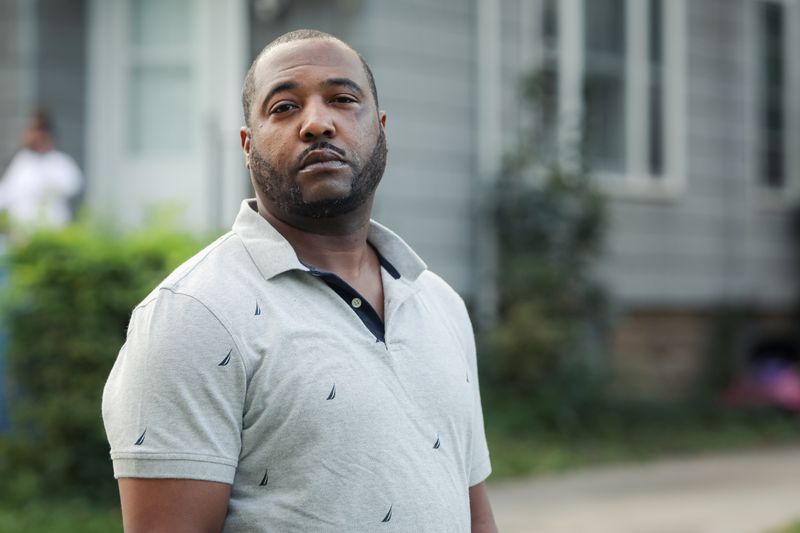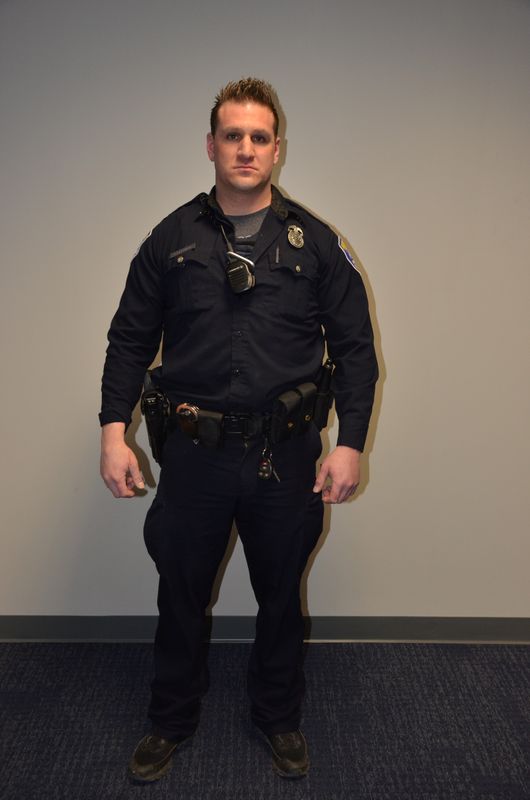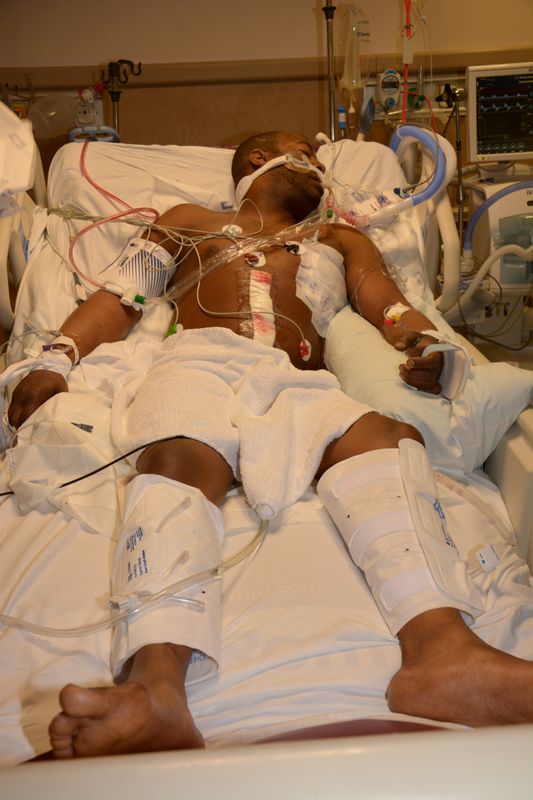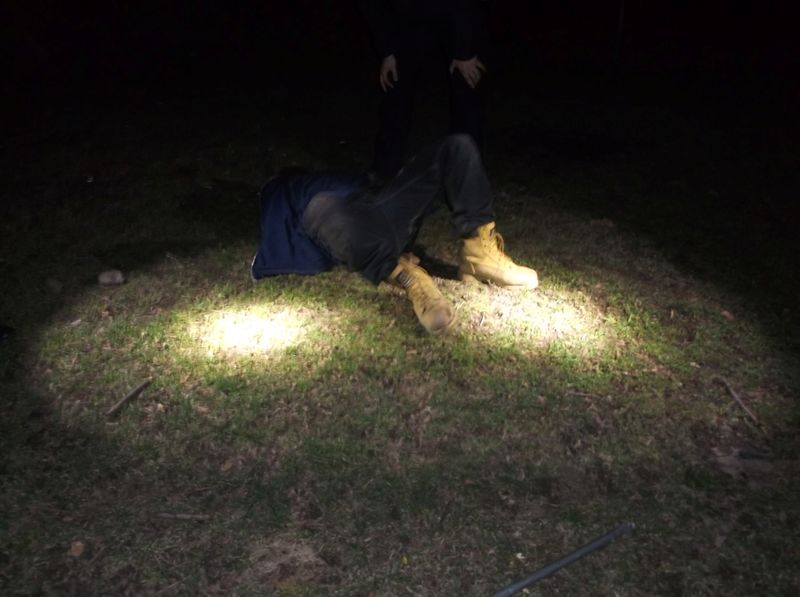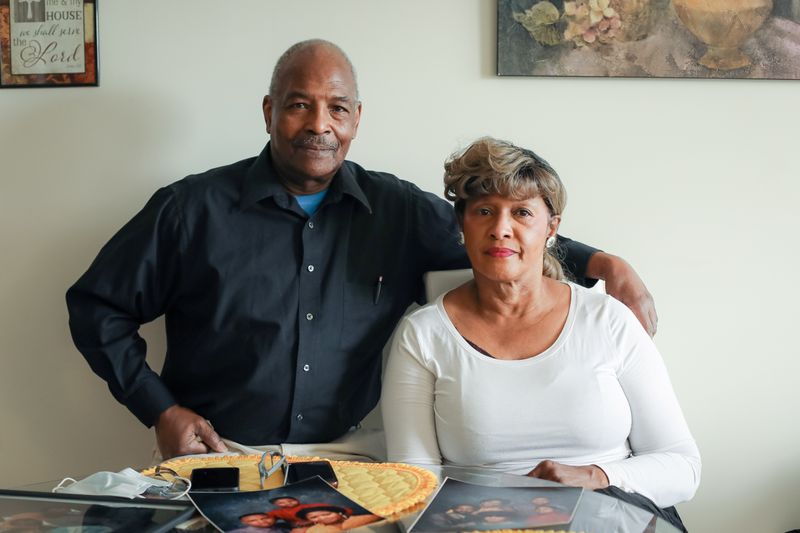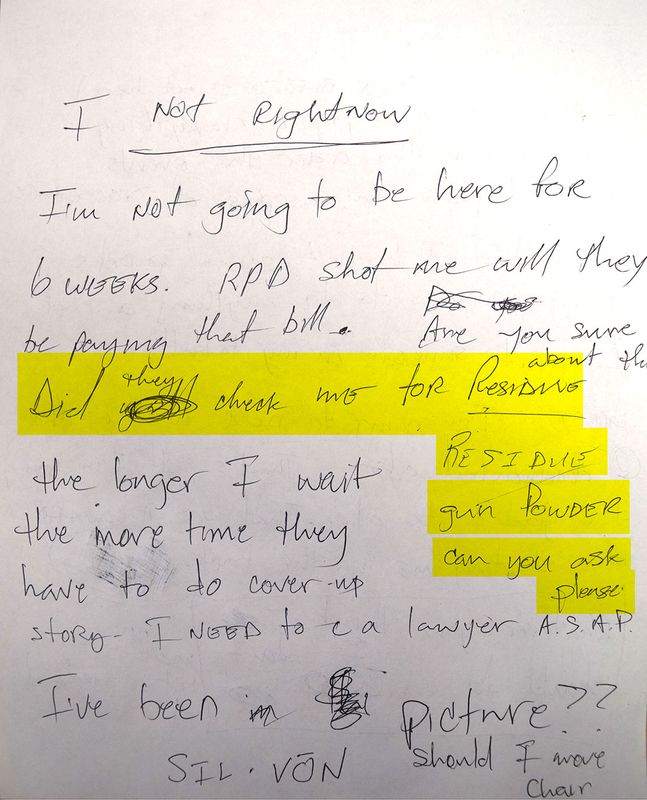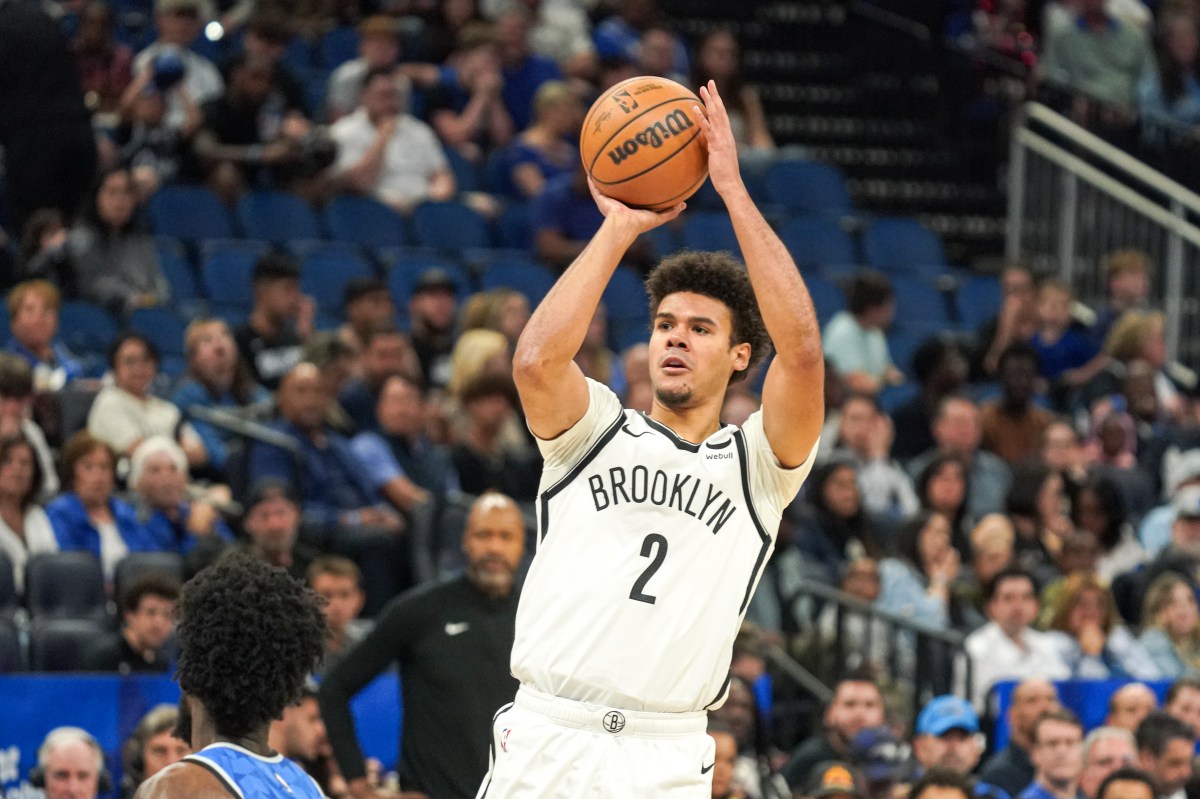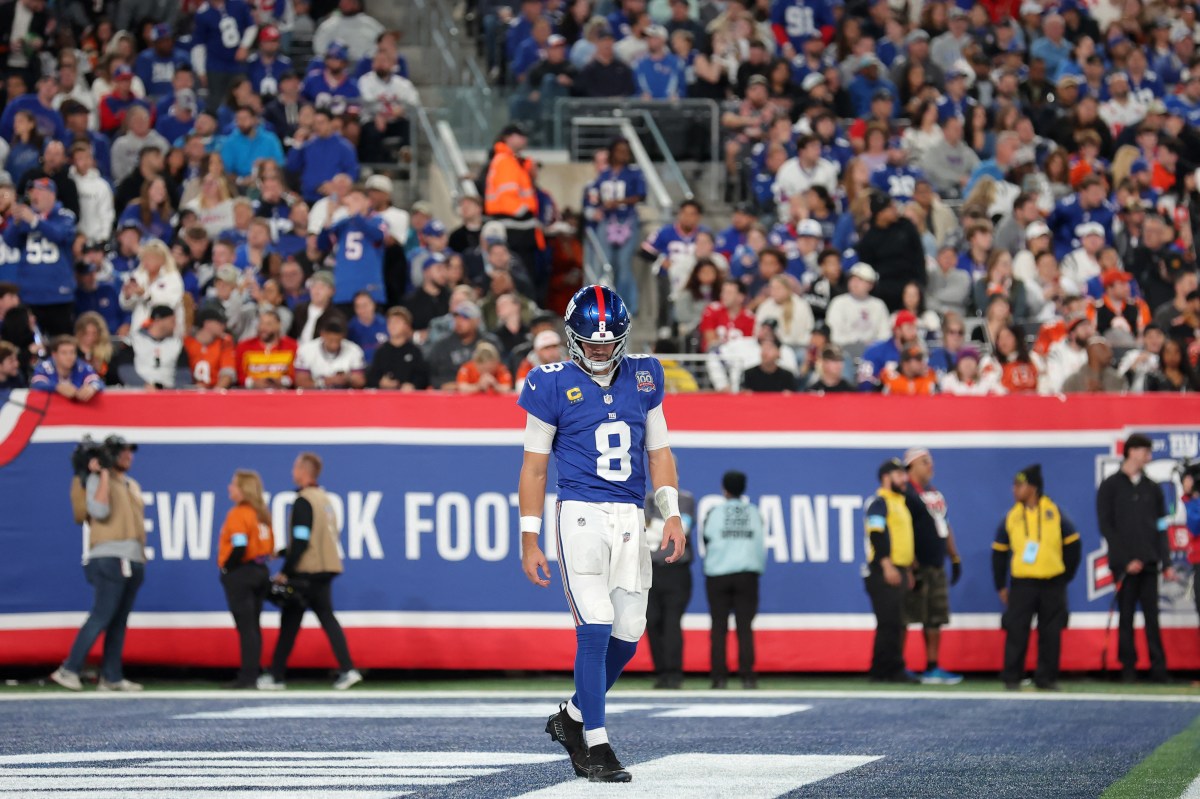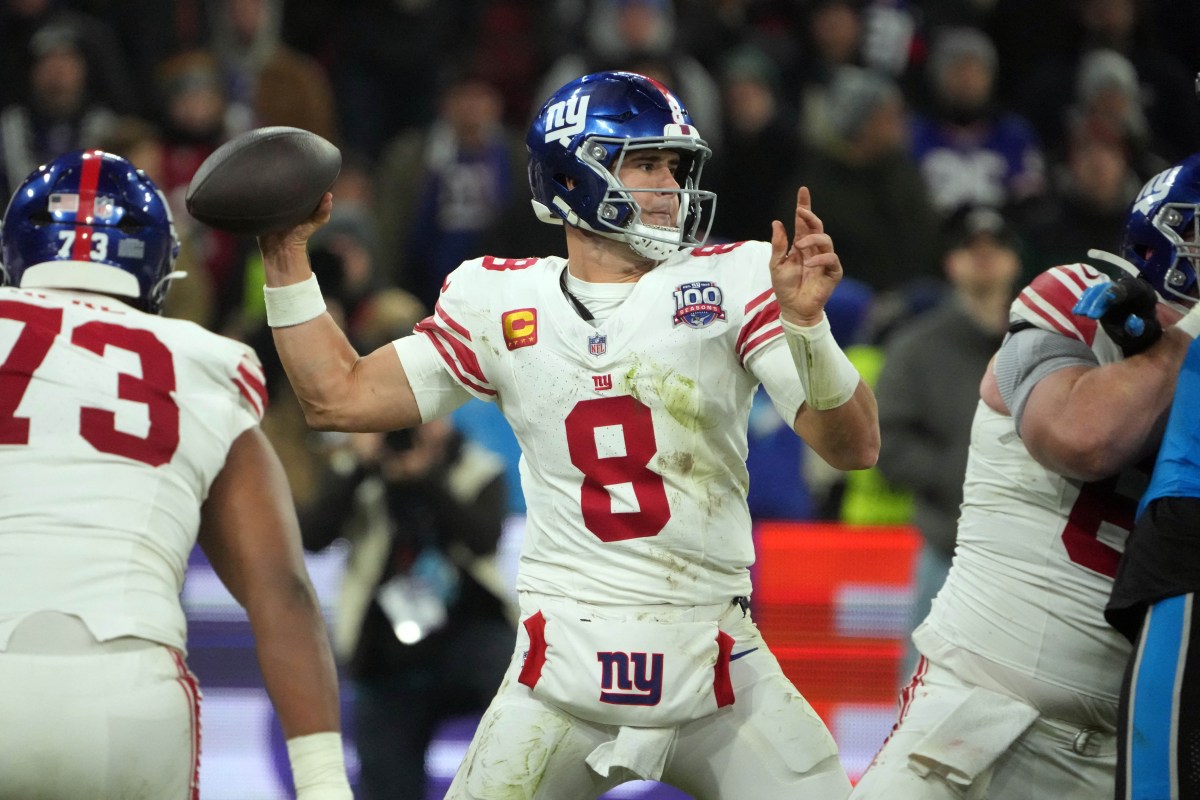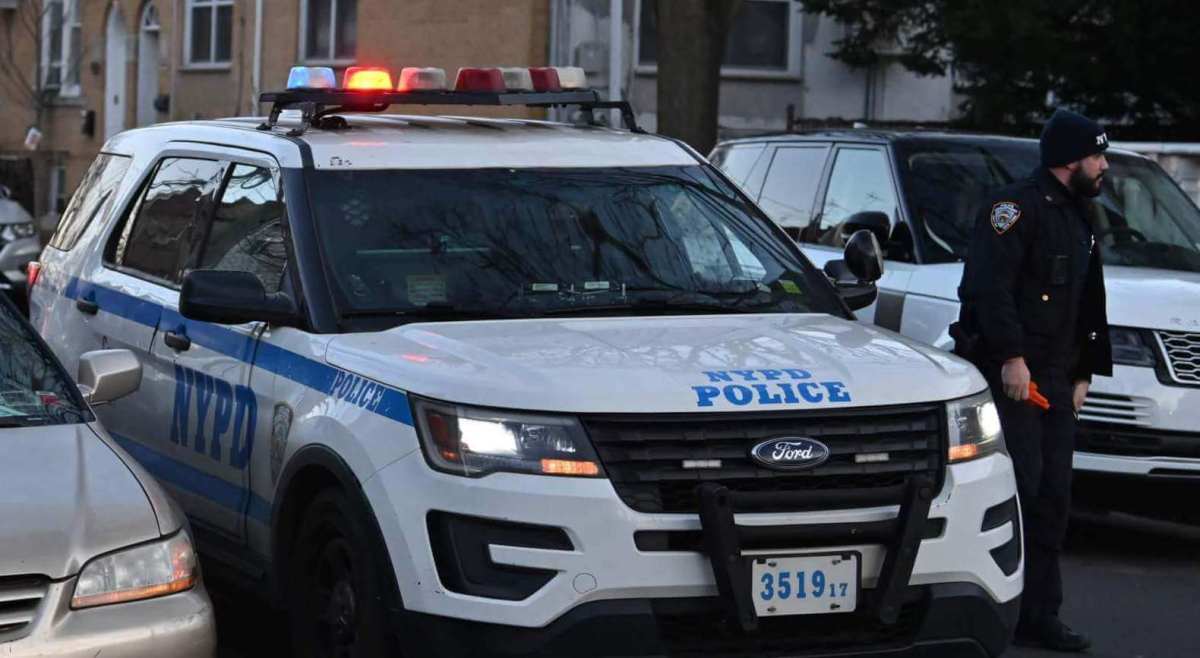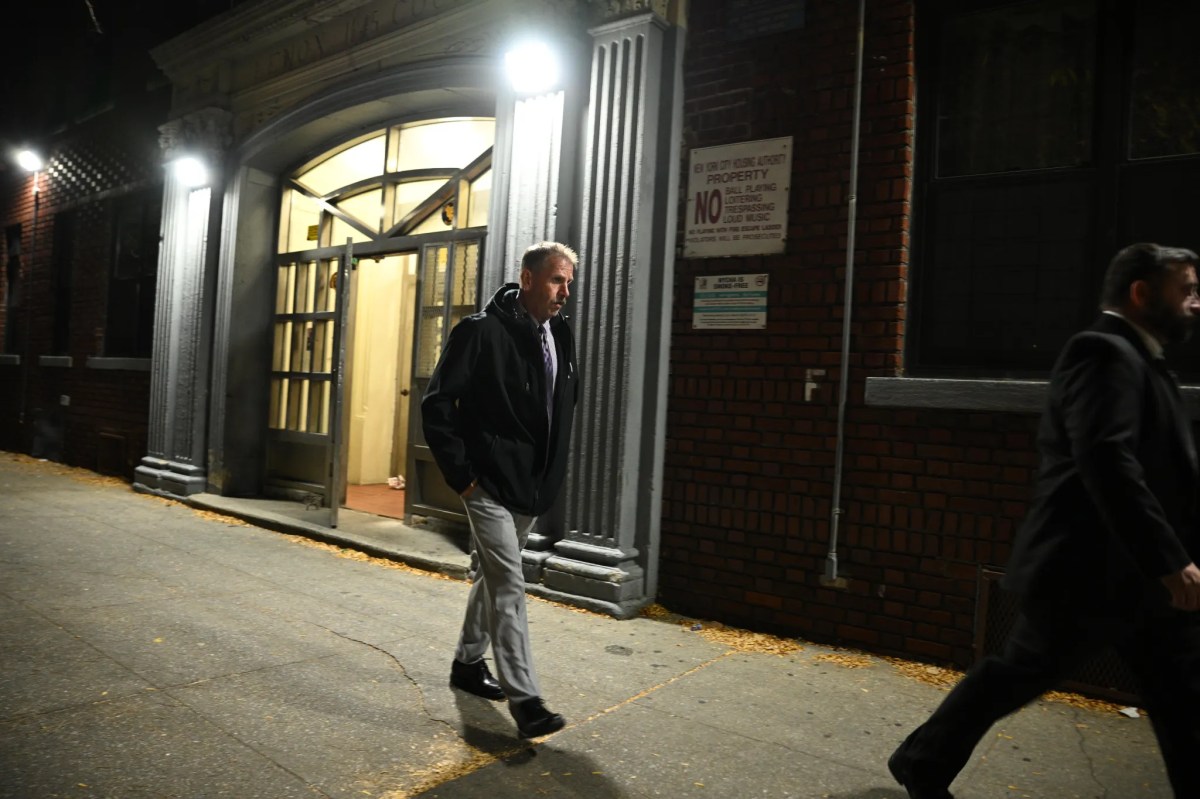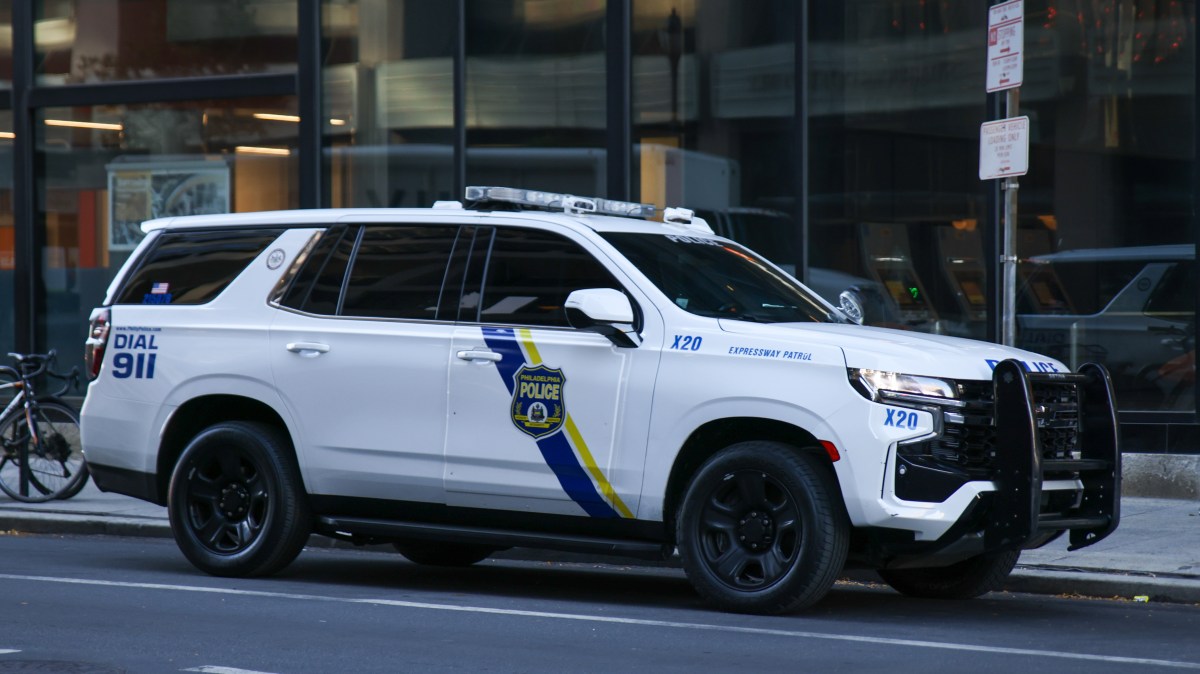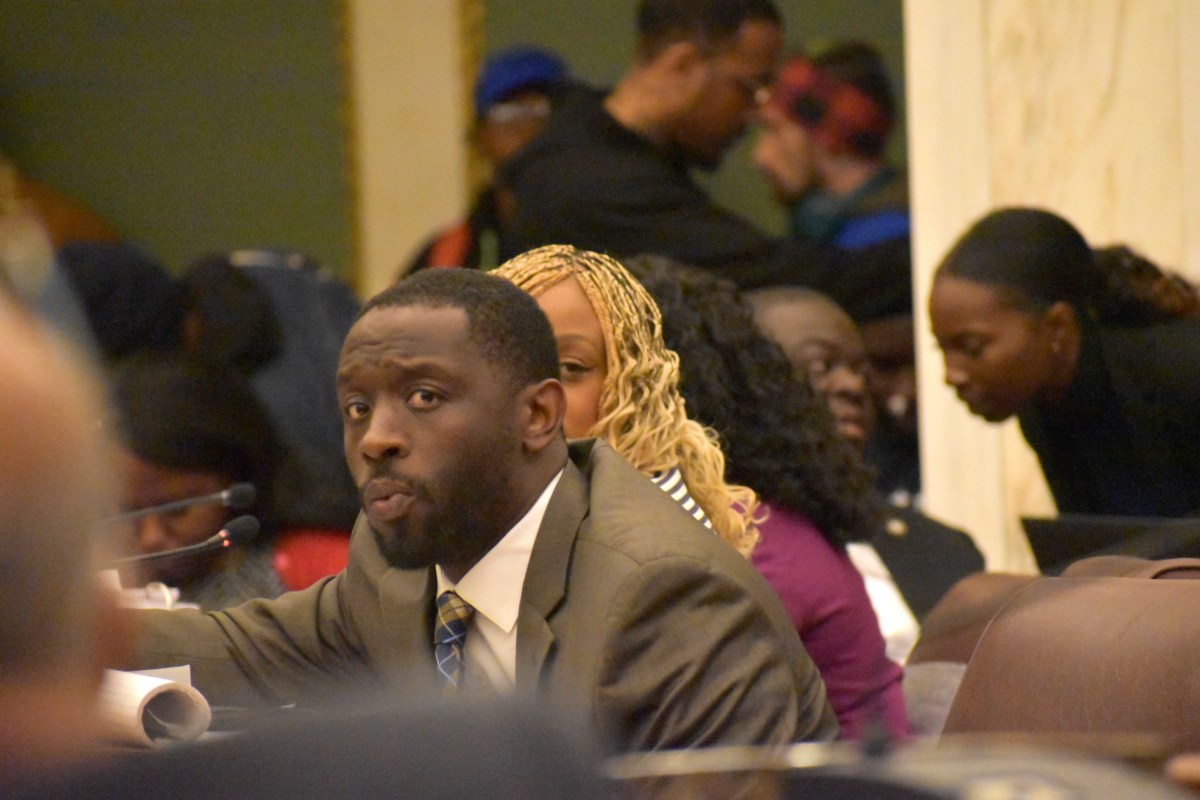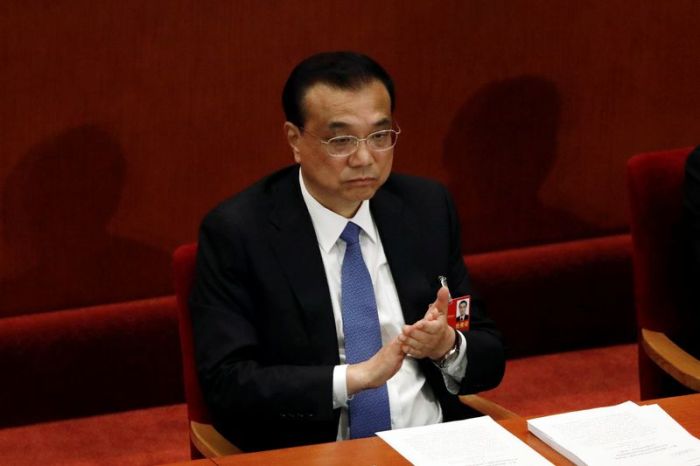ROCHESTER, New York (Reuters) – By the time Officer Joseph Ferrigno shot a Black man from behind, court records show, the Rochester cop had drawn at least 23 misconduct complaints in nearly nine years on the force.
One came from a woman who said Ferrigno, a burly hockey player, slammed her to the ground and broke one of her ribs. Another was from a one-legged man dumped from his wheelchair at a bus stop and roughed up by Ferrigno and two other officers.
Through it all, the Rochester Police Department and the Locust Club, the local police union, stood by Ferrigno. By his own account, the officer never once was disciplined for using excessive force.
Then came April 1, 2016, when Ferrigno – alone in his squad car on a chilly, moonless night – made the most fateful decision of his career.
Two hours into his shift, Ferrigno spotted a Chevrolet Impala, the same model driven by a Black man suspected of threatening a woman with a gun a few days before. Without turning on his overhead lights or siren, Ferrigno followed for a few blocks, then watched as the driver backed into a driveway on a residential street. The officer pulled in front of the driveway, flipped on his cruiser’s spotlight and trained it on the Impala. He saw two Black men inside.
Ferrigno drew his Glock handgun, jumped out and shouted, “stay in the car,” he later told detectives in a sworn statement.
Silvon Simmons, the passenger in the Impala, remembers the moment differently. He heard no warning, he told Reuters. Blinded by the spotlight, he couldn’t make out anything about the car blocking the narrow driveway.
Simmons, a 34-year-old equipment deliveryman, wasn’t the man wanted by police. Nor was the car’s driver, who lived next door. The two later explained they were coming home from a trip to the store.
As Simmons stepped from the Impala and squinted into the spotlight, he told Reuters, he was terrified by the silhouette that emerged: a large figure charging toward him, gun in hand. In a neighborhood where gunplay is common, Simmons turned and ran toward the back door of the house where he lived with his girlfriend and their three boys.
Ferrigno, 33, had been on the lookout for a man driving an Impala. Even so, the cop ran past the driver, pursuing Simmons into the darkness. Suddenly, Ferrigno told detectives, he saw a “white flash” and heard a “loud bang.” Simmons “was shooting at me,” the officer said, “and the fear came over me that he was going to continue until he got me.”
Ferrigno fired four shots, hitting Simmons three times – in his back, his buttock and his right thigh.
A second officer soon arrived, and the two approached the Black man bleeding in the grass. There, Ferrigno later told detectives, he spotted something: “the suspect’s gun on the ground next to him.” Simmons later said that he hadn’t fired a gun and didn’t even own one.
Cops swarmed the scene. At least four – including a detective who led the investigation into Simmons – held official positions in the union. Also quick to arrive was the union’s boss, Locust Club President Michael Mazzeo.
Before leaving the scene, Ferrigno asked for two things: a lawyer and a union rep. The officer, who told detectives he “was shaking and still in a state of shock,” was driven to the station and later sent home.
Simmons, stripped naked by paramedics treating his wounds, was handcuffed and loaded into an ambulance. Although Simmons was the one who took three bullets, Ferrigno is listed as the victim in at least 65 police reports.
POLICE POLICING POLICE
Simmons’ experience, from the moment Ferrigno spotted the Impala to the surprising conclusion in a courtroom almost two years later, offers a detailed anatomy of the policing tactics and policies that have driven mass protests across the United States. The shooting and its aftermath are also emblematic of the difficulties facing many American cities attempting to remake their police forces.
In Rochester, New York’s third-largest city, elected leaders have lost much of their authority in overseeing the city’s police force to a strong union. Today, officials here are working to overcome formidable legal roadblocks to reclaim some of that power.
The city council is trying to establish a civilian board with the power to discipline cops. The union, which represents about 700 of the department’s 900 employees, is fighting the move in court. A judge has ruled in its favor.
Such struggles to give communities greater oversight are playing out in much of America, where – with few exceptions – police are left to police themselves.
That power to ward off outside scrutiny derives from union contracts and state labor laws. Reuters analyzed labor contracts signed or extended over the last five years by 100 of the nation’s largest cities. Most – 88 – set strict limits on how civilian complaints are investigated or how cops are punished. Even with policing under intense scrutiny nationwide, unions in some cities recently have won new rights that make oversight even harder. Such protections enable cops with histories of misconduct complaints, like Ferrigno, to remain on the beat.
Beyond their favorable contracts, unions have used state labor laws to force cities to negotiate over broader department policies. They have successfully contested changes to where officers are assigned, who directs traffic, who catalogs evidence and who answers 911 calls.
Empowered by statutes and court rulings, unions have moved into “the actual policy and running of police departments,” said Chuck Wexler, executive director of the Police Executive Research Forum, a Washington, D.C.-based think-tank that advises chiefs.
Rochester’s leaders, like those of many cities, share blame for being in this predicament. Amid a recession in the 1980s, many municipalities bargained away some disciplinary authority in exchange for police wage freezes.
Now, when cities try to claw back control, they often fail. Citing state labor laws, courts across the country have held that cities are prohibited from changing police disciplinary policies or procedures unilaterally. In addition, both law-and-order Republicans and pro-labor Democrats in many states have approved “bills of rights” that expand protections for cops beyond what other government workers get.
The Locust Club’s Mazzeo and other union bosses say they’re protecting public servants who have answered a dangerous calling. Rochester cops patrol a city where the rate of violent crime is twice the national average.
Since 1950, two Rochester police officers have been fatally shot while on the job, union records show. The most recent was in 2014, when Officer Daryl Pierson was shot and killed during a foot chase following a traffic stop.
Failing to defend officers accused of wrongdoing, no matter how disturbing a cop’s conduct may seem at first glance, is akin to sacrificing them to a mob, union leaders say. Cities should focus on better policies and training, they argue, and altering the protections officers enjoy won’t succeed without union buy-in.
But Wexler, the adviser to police chiefs, says all sides are losing in today’s struggle. In the smartphone era, as more police violence is captured on video, the slow pace of responding to public concerns about policing creates greater peril for union members, city leaders and the residents that both serve. As Wexler put it: “Every police department is one incident away from chaos.”
HISTORY OF MISTRUST
For its examination of the Simmons case, Reuters talked to dozens of people and reviewed thousands of pages of government documents, including police reports, crime scene photographs, evidence logs, audio recordings and trial testimony. Ferrigno couldn’t be interviewed for this article. A Rochester police official said department rules prohibit any of the officers involved in the case, including Ferrigno, from speaking publicly about it.
The Simmons shooting didn’t gain much attention outside this city of 206,000, which has fallen on hard times since the Eastman Kodak Company faded as the global king of photography. But for some locals, the case of a white officer – Ferrigno – who shot a Black man – Simmons – became the latest chapter in decades of mistrust between cops and a community.
In July 1964, cops brought police dogs on a call to arrest a drunk man at a street party in a Black neighborhood, sparking days of riots. In 1993, federal lawyers unsuccessfully prosecuted five narcotics officers who allegedly robbed, beat and tortured suspects in predominantly minority neighborhoods. One of those acquitted: Mazzeo, who became head of the union 15 years later, in 2008.
Rochester police officers have shot at least 44 people since 1970, a Reuters review of press accounts found. Of those, 23 died. At least a dozen officers involved in those shootings were recognized later that year for distinguished or excellent service. One received a key to the city.
The schism between the city’s overwhelmingly white police force and many of its residents – 40% of whom are Black – grew even wider in September, when protests flared over how police treated another Black man.
Daniel Prude, 41, died after he was arrested in March during a psychotic episode. About five months later, video of the arrest became public. It showed a naked Prude handcuffed and hooded while an officer pressed his face into the pavement.
The footage hardened concerns that the use of force by officers remains largely unchecked, with Black residents often suffering the consequences. It brought into focus a key issue Reuters found in examining the Simmons shooting – namely, the insularity of a department policing itself. And it again illustrated the power of Rochester’s storied police union.
The Locust Club, which started as a social club for cops, is named for a kind of wood used to make nightsticks. In its early years as a union, it built a reputation for confrontation. Its members once tried unsuccessfully to pressure city officials for a raise by ticketing their cars. Another time, cops campaigned for overtime pay by staging a six-hour walkout, in violation of a judge’s order. The city agreed almost immediately to return to the bargaining table, and cops won overtime.
The Locust Club also fought efforts to allow outsiders to play even an advisory role in disciplining officers. Among its first moves: waging a five-year legal challenge against a civilian-led police advisory board that, the union said, was unconstitutional and “hostile to the police and ignorant of police problems.”
The union lost the court battle but won the war: In 1970, soon after the Locust Club exhausted its appeals, a new Republican mayor effectively killed the board by eliminating its funding.
In the 1990s, the city tried again, creating a new civilian review board. But the board’s powers were limited, and the Locust Club, after threatening to sue, never bothered.
Instead, the union focused on something more valuable to members: new contract provisions defining how officers are investigated for suspected wrongdoing and disciplined for misconduct. Decades later, these provisions would come into play the moment Ferrigno shot Simmons.
TAKING THE BIBLE
Simmons’ encounter with the cop played out similarly to others that have stoked outrage against police in other cities: A Black man minding his business gets stopped by a cop and then gets shot.
That’s not how the drama was framed on the news the next day.
Police said they had been searching for a man wanted for threatening a woman with a gun. Ferrigno had been shot at and returned fire, striking his alleged assailant three times, the reports said. The suspect was in critical condition.
Absent from news accounts was a fact police investigators knew as soon as they pulled Simmons’ driver’s license from his pocket: He wasn’t the man the cops were after. Nor was the driver, a friend who fled to his own house next door.
Simmons woke up handcuffed to a hospital bed, breathing through a tube and flanked by uniformed Rochester police officers. He had a fractured rib, a collapsed lung and bullets that surgeons left in his chest and pelvis.
Police wouldn’t let him watch television or see family or a pastor. They refused to answer his questions.
They also took away a source of solace. From a report filed by a Rochester police officer three days after the shooting: “I noticed that Silvon Simmons had a Bible in his hands. I did take that Bible away from him and gave it to the nurse. I did advise her that he isn’t allowed to have the Bible in his possession at this point in time.”
Although the breathing tube prevented Simmons from talking, he tried to prod police to clear him.
“Did they check me for Residue,” he wrote on a piece of paper collected by a police guard. “RESIDUE. Gun Powder. Can you ask please.”
Simmons told Reuters he knew that no residue would be found on his palms or the sweatshirt he had on that night. That’s because, as he repeatedly told police, the Ruger found near his feet wasn’t his.
Police didn’t test for residue. They did, however, search his home and car for bullets, holsters, gun cleaning supplies, or anything else that might indicate Simmons owned the Ruger. They found nothing to help their case.
When Simmons was taken off the ventilator, his first visitors were police detectives. He asked for a lawyer. He said the gun wasn’t his. On sedatives and the powerful pain reliever oxycodone, Simmons protested that detectives were taking advantage of him.
The detectives continued the interrogation anyway; a judge later ruled the interview violated Simmons’ right to counsel.
“I’M THE ONE WHO GOT SHOT”
Ferrigno’s turn with detectives went differently. It would be five days before investigators questioned him about his actions that night, after negotiating conditions with his lawyer and Locust Club representatives.
Such delays can make figuring out what happened more difficult, said Stephen Rushin, a criminal law professor at Chicago’s Loyola University. “The first 48 hours are some of the most important periods of time to get to the truth and make sure that people can’t construct stories to deflect blame,” Rushin said.
Ferrigno gave his statement in the office of a private lawyer provided by the union. The detectives were fellow members of the Locust Club.
The day before Ferrigno’s interview, a Monroe County Court judge arraigned Simmons in the hospital. Simmons hadn’t yet had a chance to meet his public defender, and the charges were grave: attempted aggravated murder, attempted aggravated assault of a police officer, and two counts of criminal possession of a weapon.
As it happened, Judge Melchor Castro had seen Simmons before.
In 2013, Castro had signed off on a plea deal and sentenced Simmons to a year in jail for misdemeanor assault. Simmons told authorities that a neighbor in Rochester’s sometimes tough Dutchtown section had pulled a gun and then shot at his truck as Simmons hurried to get away, court documents show. Simmons escaped without injury, but only after he deliberately struck and injured the neighbor with his Dodge Durango SUV, according to court records.
During the brief hearing in 2013, Simmons was told that he was waiving any rights, “such as self defense in this matter,” by taking the plea deal. Simmons replied, “yes, sir.” He served eight months.
When Castro came to his hospital room in 2016 to explain the charges, this time Simmons was incredulous. “What in the world are you talking about?” Simmons recalled telling the judge. “I’m the one who got shot.”
Bail was set at $250,000. Simmons remembered it as “some crazy numbers that we couldn’t ever do. Never.”
Frank and Sharlene Simmons, retired and living in Tennessee, drove nearly a thousand miles to be by their son’s side.
At the hospital, they were stopped at the nurses’ station. Sharlene scanned the intensive care bays until she saw her son “chained” to the bed and surrounded by guards. The sight “just broke us to pieces,” she recalled. Frank, a decorated Marine veteran who served in Vietnam, said it seemed like Simmons was being treated “like a POW.”
His parents say Simmons had been a good student. He played shortstop on a youth baseball team sponsored by the Rochester Police Department. As a boy, he thought about becoming a cop like his cousin, who at the time was on the Rochester force. Eventually, he followed his father into a job delivering heating and air conditioning equipment.
In early 2017, after Simmons had been in jail for nearly a year, a county prosecutor offered a deal. The most serious charge – attempting to kill a police officer – and two weapons charges would be dismissed. But only if he pleaded guilty to attempted aggravated assault on an officer and accepted a 15-year sentence.
Rejecting the deal meant risking life in prison. Public defender Elizabeth Riley presented the prosecutor’s offer. She said his response was immediate.
“No. I didn’t do it,” Simmons told her. “I’m not taking that deal.”
NEXT — Chapter Two: A man gambles to reclaim his life; his trial raises questions about how police investigated him – and their own
(This story corrects terms of plea deal prosecutors offered to Silvon Simmons, in third from last paragraph.)
(Reporting By Lisa Girion and Reade Levinson; additional reporting by Lindsay DeDario. Editing by Blake Morrison and Janet Roberts)

